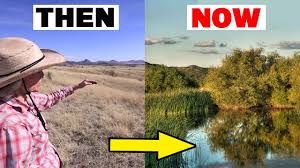
Breaking News
 BREAKING: Federal Agents Descend on Suspected Somali Fraud Sites in Minneapolis (VIDEO)
BREAKING: Federal Agents Descend on Suspected Somali Fraud Sites in Minneapolis (VIDEO)
 BREAKING: Federal Agents Descend on Suspected Somali Fraud Sites in Minneapolis (VIDEO)
BREAKING: Federal Agents Descend on Suspected Somali Fraud Sites in Minneapolis (VIDEO)
 Aargh! Letters of marque would unleash Blackbeard on the cartels
Aargh! Letters of marque would unleash Blackbeard on the cartels
 How a Barter System Could Sustain Communities During a Supply Chain Collapse
How a Barter System Could Sustain Communities During a Supply Chain Collapse
Top Tech News
 EngineAI T800: Born to Disrupt! #EngineAI #robotics #newtechnology #newproduct
EngineAI T800: Born to Disrupt! #EngineAI #robotics #newtechnology #newproduct
 This Silicon Anode Breakthrough Could Mark A Turning Point For EV Batteries [Update]
This Silicon Anode Breakthrough Could Mark A Turning Point For EV Batteries [Update]
 Travel gadget promises to dry and iron your clothes – totally hands-free
Travel gadget promises to dry and iron your clothes – totally hands-free
 Perfect Aircrete, Kitchen Ingredients.
Perfect Aircrete, Kitchen Ingredients.
 Futuristic pixel-raising display lets you feel what's onscreen
Futuristic pixel-raising display lets you feel what's onscreen
 Cutting-Edge Facility Generates Pure Water and Hydrogen Fuel from Seawater for Mere Pennies
Cutting-Edge Facility Generates Pure Water and Hydrogen Fuel from Seawater for Mere Pennies
 This tiny dev board is packed with features for ambitious makers
This tiny dev board is packed with features for ambitious makers
 Scientists Discover Gel to Regrow Tooth Enamel
Scientists Discover Gel to Regrow Tooth Enamel
 Vitamin C and Dandelion Root Killing Cancer Cells -- as Former CDC Director Calls for COVID-19...
Vitamin C and Dandelion Root Killing Cancer Cells -- as Former CDC Director Calls for COVID-19...
 Galactic Brain: US firm plans space-based data centers, power grid to challenge China
Galactic Brain: US firm plans space-based data centers, power grid to challenge China
How This Woman Turned Arizona's Desert into a Farmland Oasis

This climate has meant the region has been a hub for agricultural growth for thousands of years despite the fact rainfall has always been relatively low. It's Arizona's rivers and aquifers that hold groundwater which have supported the state's now $23 billion agriculture industry. In terms of revenue generated, Arizona's top five agricultural products are cattle, calves, lettuce, dairy products, cotton, and hay. In total, farmland makes up about 35% of the state of Arizona. Farming in the desert has been a challenge for Arizona's modern farmers, who grow water-intensive crops like cotton, alfalfa and corn for cows. It's estimated that these farms use nearly three-quarters of the available water supply to irrigate their crops.
The Colorado River system, which supplies 36 percent of Arizona's total water use has experienced extensive drought conditions for the past 19 years. This has resulted in Lake Mead dropping to historically low reservoir levels. More than one-third of Arizona's water flows up the Colorado River to Lake Mead. This year an intensifying drought and declining reservoir levels across the Western United States has prompted the first-ever water supply cuts to Arizona farmers.
Extensive droughts and dwindling water supplies have wreaked havoc on the once prosperous farms that could endure the arid conditions. Arizona has also become one the fastest growing states in the last decade, as result there has been a demand for tree lined neighborhoods, golf courses and lawns, all of which require vast amounts of water. As we keep consuming the ancient groundwater, without it being replenished, water tables drop and rivers start to dry up.



